The easiest and convenient way to put your designs onto your garment is printing, but it comes with limitations when you go to an ordinary clothing manufacturer. Zega Apparel has covered you here too with its special cut and sew services. We do not print on ready-made garments when you order custom clothing from us. Instead, we send cut panels for printing, so even if you have locations that other clothing manufacturers told you were unreachable or undoable, you do not need to worry. If you are facing troubles with white marks on sublimation, we have got you covered. If you are facing troubles doing all-over screen printing, we’ve got you covered. If you are facing trouble putting your logo on the edge of one sleeve or have trouble doing prints that go on irregular positions, we got you covered. If you want to place a unique pattern on your hoodie pocket and have a difference on the rest of the product, we’ve got you covered. You have any trouble with any print positioning, Zega Apparel will find a reasonable solution for you and make sure you are never told no for any type of customization. Zega Apparel provides multiple options for printing which include silk screen printing, all-over sublimation printing, heat transfer printing, digital printing, and even direct-to-garment printing.
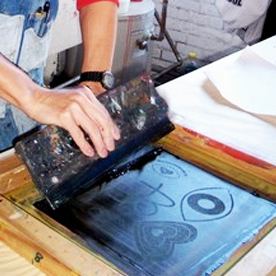
Silkscreen printing is one of the most common and easiest ways to print designs onto a product. Due to its fabric-friendly nature, it can print solid-color designs on almost any fabric regardless of their blend or processing. Zega Apparel uses negatives for most of the complex designs as opposed to butter paper, so the result is more sharp and clear. The best part of our screen printing process is our ability to do complex designs at any location since we do not use modern-day machines for complicated designs. This results in generating the best output with unlimited customization in terms of print positioning and matching the required colors of any design.
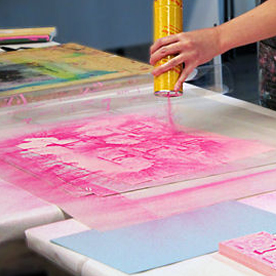
Flock is basically made up of synthetic fibers such as cotton, rayon, and polyester. First of all, an adhesive liquid is applied to the designated printed area so that flock sticks to it, then the flock is applied to it. Flock screen printing gives a velvety and silky feel. For different colors, the first flock is dyed in that particular color, and then it is applied to that adhesive coating with the help of a screen. The result is a feathery soft embossed print that feels very premium.
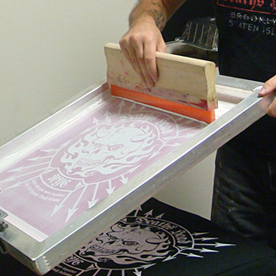
Pigment screen printing or commonly known as water-based screen printing is very similar to discharge screen printing, but the difference is its pigment (color) is based on water instead of plastic-based liquid or Plastisol. It is mostly used on white and light color garments. Water-based printing gives a softer feel and can be used with vibrant colors. Water-based screen printing can only give the best results on light color fabric such as white, off-white, or light grey, etc.

For the discharge screen printing technique, all the same equipment is used, but inks are different. Discharge inks are used for this style of printing. These inks, when transferred to shirts they remove the original color from that spot and replaces it with the applied color. On touch, it gives the feel of simple cloth because color merges with the fabric. Discharge ink can be used as a standalone print, or it can be used as under base for some other print. It is like an alternate for water-based printing that can only be done in lighter colors.
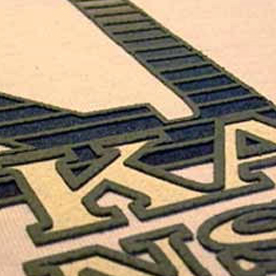
At some point, high-density printing may look like high-quality puff printing, but it is not. Puff printing usually lacks a sharp edge. This is where high-density printing comes in. Inks used for high-density printing are very viscous, so they don’t hold on to screens. They just flow through. That is why they have sharper and fine edges, but with a little additional element of puff, it gives a 3D image as well. It is not recommended to wash high-density prints regularly as due to their stiff nature, they tend to fade off quickly as opposed to other printing methods. However, it could be very handy if you are looking to put them on garments that are not washed regularly.
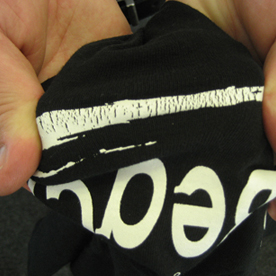
Crack screen printing is also known as shatter screen printing or distress screen printing. For the crack screen printing technique, a special kind of ink is used, which, when dried, gives a cracked or shattered image as required by the clients. After applying cracking ink on the screens to transfer on shirts, it is then dried up by applying heat. When it dries, all the cracks appear, which gives it a shattered look. It is used to give a vintage look to t-shirt, sweatshirts, or jackets. Crack Screen Print assists in making your clothing business unique and stands out from regularly printed products.
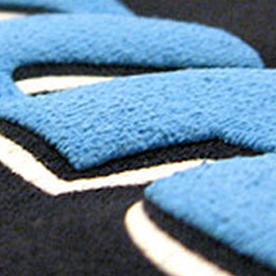
For the puff screen printing process, specialized puff inks are used. This technique is very popular and is currently used to give a vintage look to t-shirts, sweatshirts, or jackets. However, sometimes it is used as part of the image to add focus to a specific point or specific design within a complete design. For The Puff printing process, specialized puff printing ink is used on screens. After the transfer of ample ink degree of heat is applied to the image to get the puff result as required. Some images require pure puffs, and some require Plastisol as an additive to add shine to them and give a better appearance. Puff screen printing gets raised, but in reality, it is a puff with mostly air in between. Therefore the bigger puff you want, the more the chances of the print cracking.
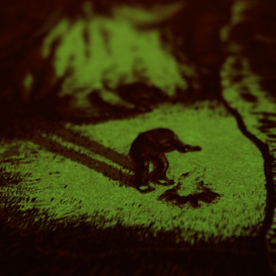
This printing process for glow-in-the-dark printing is the same. The only difference is the use of a special Glow in the Dark ink. Specialized neon inks are used for the glow the dark printing process. This ink is usually used for highlighting images. This kind of glow-in-the-dark printing image gives better results on fabrics with darker textures. Such techniques are used for funky and cool images, which give a style statement. The glow of the shirt only gets highlighted at night when it’s really dark or in a room with no light. It can also be used for Halloween costumes if you are looking to create a theme-based clothing line.
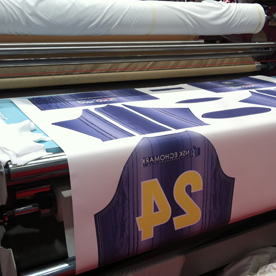
The sublimation printing process is a more complicated process than heat transfers. In this process, sublimation ink is applied to the required area then heat is applied. Because of heat application, this ink turns into a gas and then embeds onto the fabric and gives a cleaner and more professional look. But this process can only be done on 100% polyester fabrics or polyester coating. This also requires heat press but should not be confused with heat transfer printing. Zega Apparel offers no white marks guarantee for its sublimation printing as it prints on cut panels, then stitches them together for a more premium look. This process is recommended for sports jerseys as well that usually have digital designs on them and are made out of moisture-wicking polyester material. Sublimation is usually done all over the shirt or any product to fulfill its purpose, but Zega Apparel offers prints on any location as long as the polyester is white.

The heat transfer printing process is a very easy and commonly used method. In the heat transfer printing process, an image is transferred onto paper which is then ironed on the T-shirt to transfer the image, or in our case, large industrial iron is used to transfer those images accurately, efficiently, and quickly. This process requires a lot of heat application through those irons so that the image could transfer from paper to the required fabric. This is a bit easy process, so almost any type of image can be transferred to the T-shirts. The longevity of this printing is questionable due to its sticker nature and is not recommended for high-quality products.

As opposed to sticker heat transfer printing, Zega Apparel offers its alternate, which is much more reliable and has a lower rate of removal in comparison to heat transfer printing. The result of this print is similar to a sticker being pasted on top of a garment but is definitely long-lasting and can be used to print real-life images onto the products.

One of the best and easiest method to put on a print is DTG but sadly comes with a higher minimum requirement to its industrial utilization and high cost. However, Zega Apparel offers this for the lowest minimum of 100 pieces and can guarantee the print to be of the highest and feel-less quality. Any custom clothing manufacturer that can offer Direct to garment printing to its clients can definitely take your clothing brand to new heights, and that is what Zega Apparel intends to do.